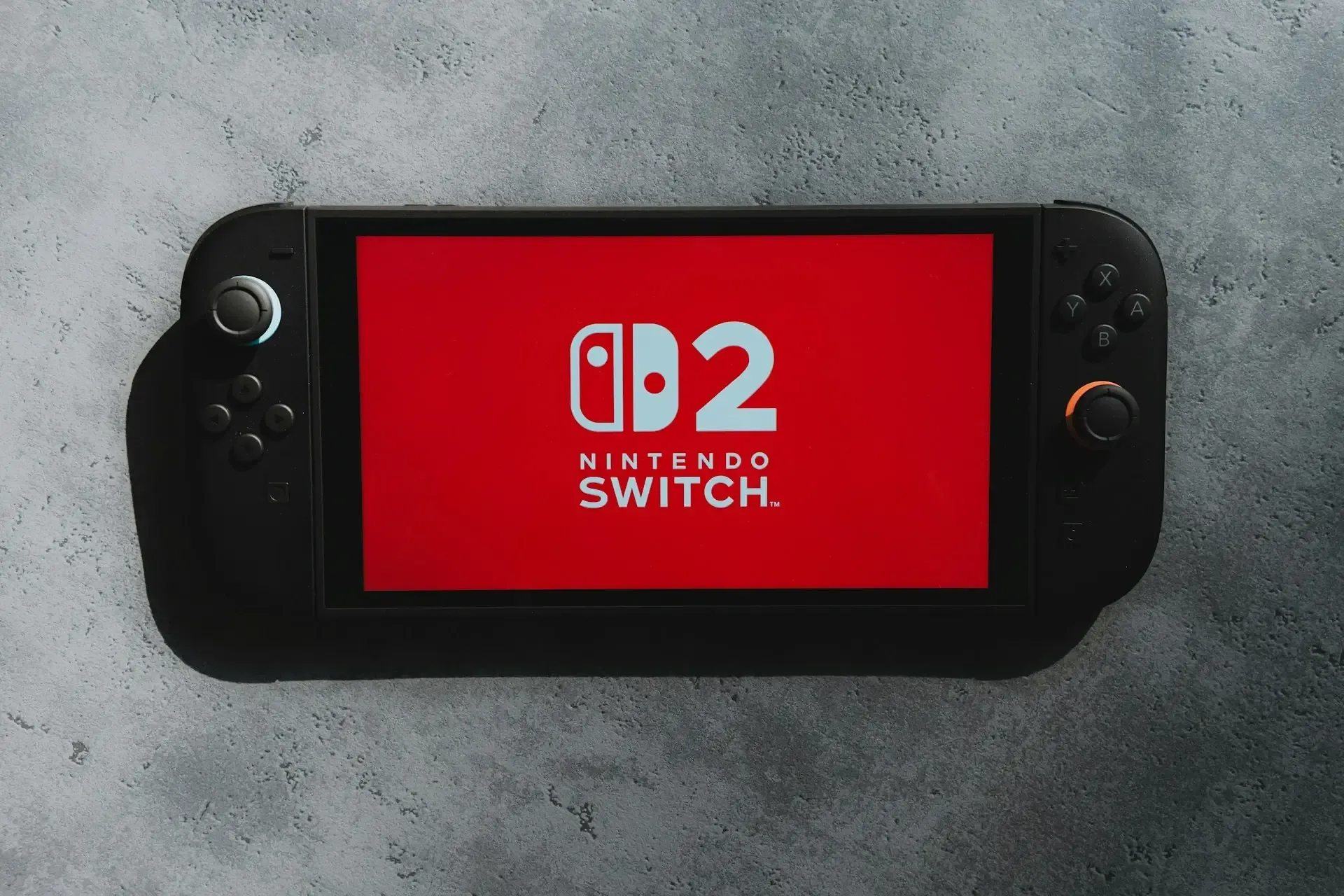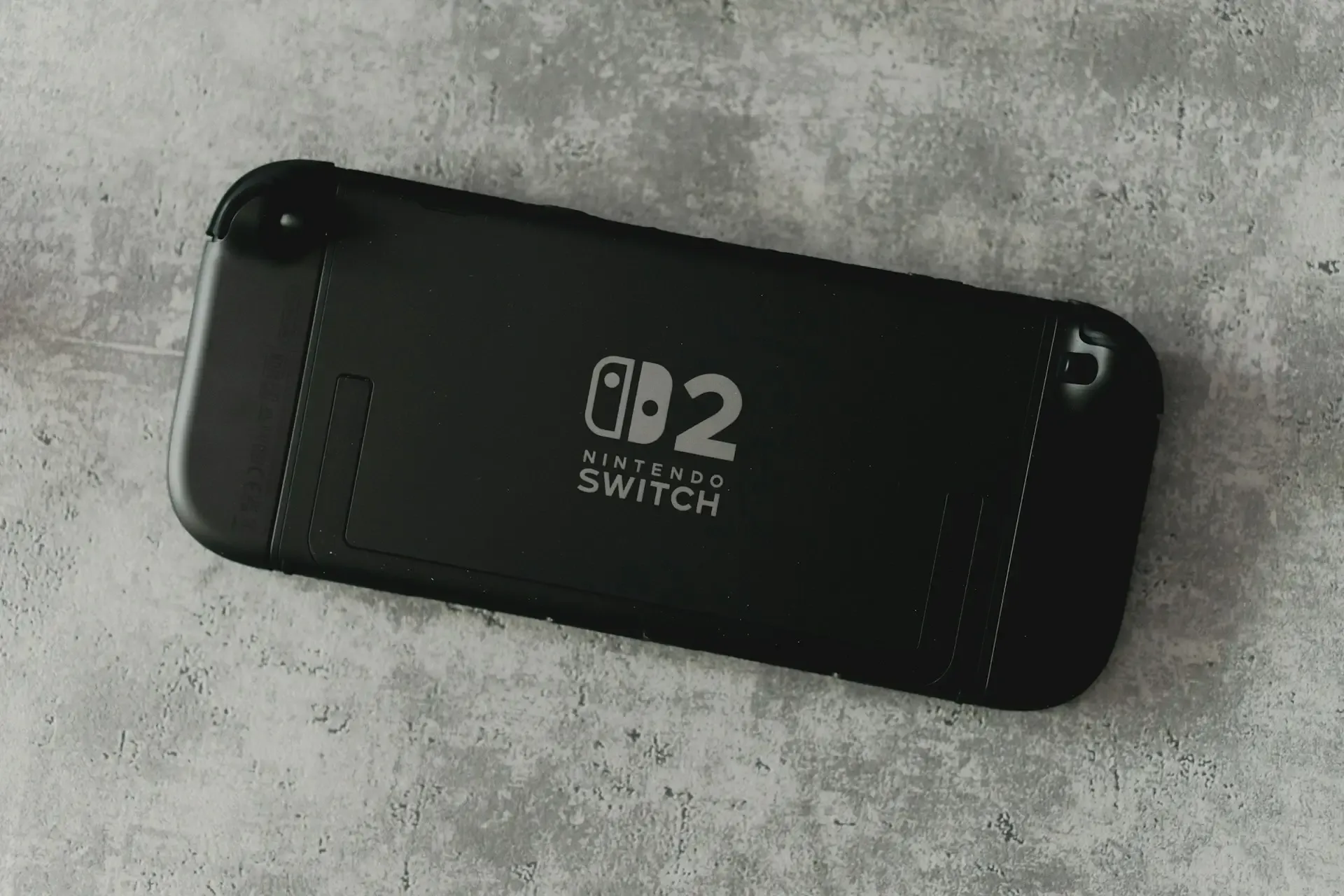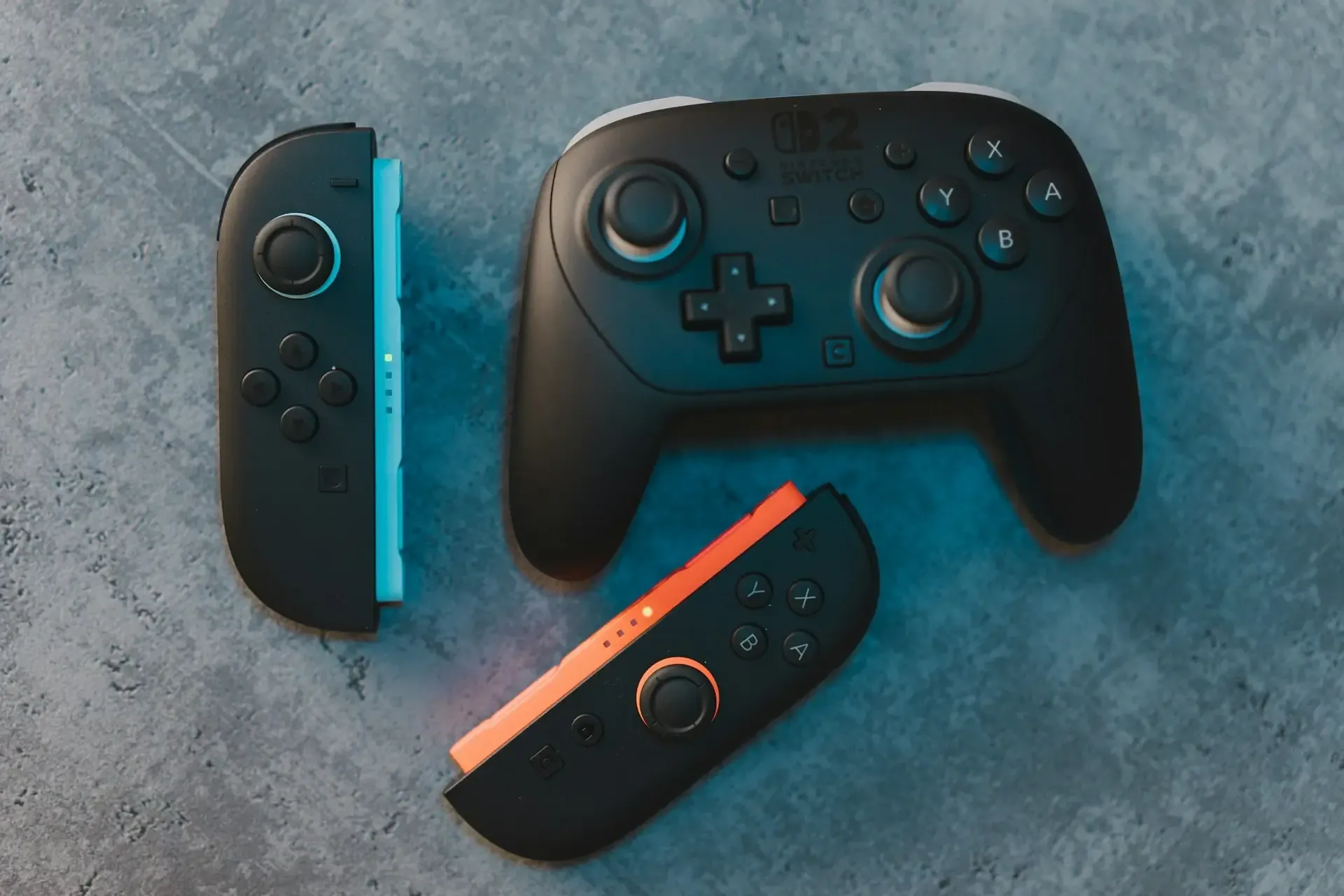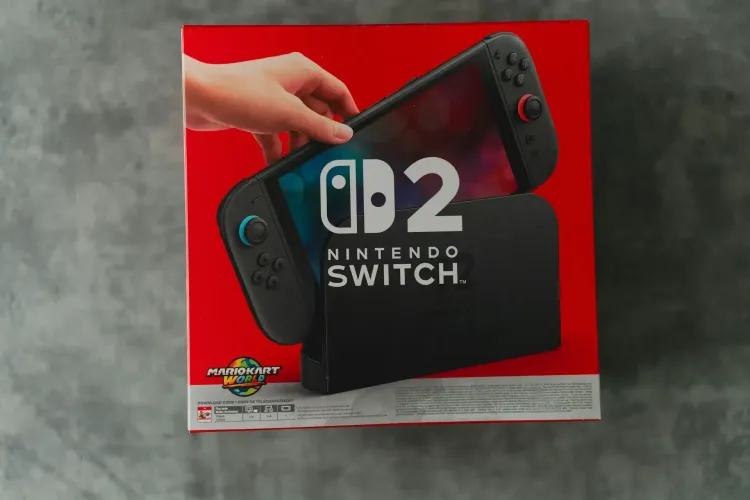Since its launch in 2017, the original Nintendo Switch carved out a unique place in the gaming world; a hybrid console that seamlessly toggled between handheld, tabletop, and docked play. With over 125 million units sold, it became a cultural and commercial phenomenon, appealing to both casual players and seasoned gamers.
But eight years later, its once-groundbreaking hardware began showing its age, struggling with modern game demands, graphical fidelity, and online features. All eyes turned to what would come next.
Now, in June 2025, Nintendo has officially launched the Nintendo Switch 2, answering years of speculation with a next-gen hybrid console that promises sharper visuals, better performance, smarter controls, and deeper integration with online services.
So, how much has actually changed, and why does it matter? Let’s break down the core upgrades that define Nintendo’s most ambitious console to date.
Design & Display

The original Switch featured a 6.2-inch 720p LCD display encased in a plastic body. While its hybrid nature (handheld, tabletop, docked) was revolutionary, the build quality was utilitarian. The bezels were chunky, and its screen, though functional, lacked brightness and vibrancy - especially noticeable compared to modern smartphones and tablets.
The Nintendo Switch 2 brings a notable leap forward: it features a 7.9-inch 1080p LCD display with HDR10, variable refresh rate (VRR), and support for up to 120Hz refresh rates in handheld mode. Although fans had hoped for OLED, Nintendo opted for a high-end LCD panel to balance cost, durability, and performance.
The bezels are slimmer, and the overall form factor is slightly larger and heavier than the OLED model, giving it a more premium look without compromising portability. Build materials remain plastic, but with a sturdier chassis and improved ergonomics for longer play sessions.
Why It Matters:
The display upgrade isn’t just cosmetic. With higher resolution, smoother motion, and HDR, games look dramatically more vibrant and fluid, especially in handheld mode. The 120Hz refresh rate brings a level of responsiveness usually reserved for high-end mobile and PC gaming, making the Switch 2 feel like a modern, capable gaming device whether you're playing on the go or at home.
Performance & Hardware
Built around Nvidia’s Tegra X1 SoC (System on Chip), the original Switch was already underpowered at launch. Though Nintendo’s first-party games ran well thanks to optimization, third-party titles like The Witcher 3 or Doom Eternal required major compromises: blurry textures, low resolutions, and inconsistent frame rates. There's no support for modern rendering features like ray tracing or AI-based upscaling.
The Switch 2 finally modernizes Nintendo’s hardware lineup. It features a custom Nvidia T239 processor, built on Ampere architecture, similar to the technology behind the RTX 30-series. The console now includes a 3+ teraflop GPU, a 12-core ARM Cortex-A78C CPU, and 12 GB of LPDDR5X RAM, tripling the original's memory.
The real game-changer? DLSS 2.0 (Deep Learning Super Sampling) is built-in, allowing the system to render games at lower internal resolutions and upscale to 4K docked output with AI-assisted precision. Ray tracing support is also technically present, though developers may use it sparingly to preserve performance.
Why It Matters:
Nintendo has always prioritized creative gameplay over raw horsepower - but the Switch 2 finally delivers both. With DLSS and a modern GPU, players can enjoy crisper visuals, smoother frame rates, and more ambitious games, without sacrificing portability. This closes much of the performance gap between handheld consoles and home systems, and invites more high-profile third-party releases into Nintendo’s ecosystem.
Backward Compatibility

The original Switch plays only Switch-era games, cutting off compatibility with Wii U, 3DS, or earlier titles unless re-released or emulated via Nintendo Switch Online. The benefit, however, was a unified hardware generation with strong library cohesion.
With the Switch 2, Nintendo has confirmed broad backward compatibility with most physical cartridges and digital titles from the original Switch. Players can insert existing cartridges or redownload purchased games tied to their Nintendo account. Better still, many older titles benefit from performance enhancements, such as improved load times, more stable frame rates, and cleaner visuals, similar to how the PS5 upgrades select PS4 games.
Not every legacy title runs flawlessly, especially niche or third-party games with unique engines, but the overall compatibility rate is high. Some developers are also releasing “Next-Gen Editions” for older titles, offering further upgrades.
Why It Matters:
Backward compatibility makes upgrading seamless. It respects the investments players have already made(both emotionally and financially) by preserving their existing game libraries. And by improving how these games run on the new hardware, the Switch 2 makes returning to titles like Tears of the Kingdom, Smash Bros. Ultimate, and Mario Kart 8 Deluxe feel like fresh experiences rather than compromises.
Joy-Con Redesign & Input Improvements

The Joy-Cons were a bold innovation: detachable, motion-sensitive, and packed with features like HD Rumble and an IR sensor. But they’re also notorious for "Joy-Con drift" - a hardware flaw where the analog stick detects phantom movement. The lack of analog triggers limited their usefulness in some genres like racing games.
The Switch 2 introduces redesigned Joy-Cons, now attaching magnetically instead of using the rail system. While the overall look remains familiar, the feel is more solid, with slightly larger buttons and improved grip. Unfortunately, hall-effect sensors, which would have eliminated drift altogether, are not included, meaning drift is still possible. However, Nintendo now offers free lifetime repairs for any Joy-Con drift issues, acknowledging the flaw upfront.
Other enhancements include a new “C” button dedicated to GameChat and system-level sharing, expanded motion sensing, and refined HD Rumble. While analog triggers were rumored, they are still absent, likely due to Nintendo’s continued focus on simplicity and backward compatibility.
Why It Matters:
While not a total overhaul, the Joy-Con 2 addresses many frustrations of the original, especially build quality and responsiveness. The magnetic connection feels more premium, and small additions like the C button add functionality. Still, the absence of hall-effect sticks and analog triggers leaves room for improvement. For most players, though, the revised Joy-Cons are a welcome and more reliable evolution.
Storage, Connectivity & Online Ecosystem

Storage has always been a weak point - just 32GB internal memory on the base model (and 64GB on OLED), barely enough for a few large games. Expandable via microSD, but not ideal. Online services through Nintendo Switch Online (NSO) are basic, with limited cloud saves, voice chat via smartphone app, and spotty infrastructure.
The Switch 2 significantly improves this with 256GB of internal storage, giving players ample room for first-party games, third-party ports, and digital downloads right out of the box. It also supports microSD Express cards for even faster expandable storage - up to 2TB.
Connectivity has also leveled up. The new model includes Wi‑Fi 6, Bluetooth 5.3 (with native support for wireless headphones and controllers), and dual USB-C ports; one for charging, one for accessories. The dock now includes a built-in Ethernet port, making wired online play more accessible and stable.
Why It Matters:
Storage constraints and underdeveloped online services were among the biggest frustrations with the original Switch. The Switch 2 tackles both, offering serious internal storage, faster downloads, more reliable online play, and a richer NSO ecosystem. These upgrades help Nintendo keep pace with the expectations of modern gamers, especially those invested in digital libraries, multiplayer titles, or long-form games that eat up space.
Summary: Switch vs Switch 2
| Feature | Nintendo Switch (2017) | Nintendo Switch 2 (2025) |
|---|---|---|
| Display | 6.2″ LCD, 720p | 7.9″ LCD, 1080p, HDR10, VRR, up to 120Hz handheld |
| Processor | Nvidia Tegra X1 | Custom Nvidia T239 (Ampere), 3+ TFLOPS GPU |
| Performance | Up to 1080p docked | 4K docked (DLSS), 1080p handheld @ 60–120FPS |
| Backward Compatibility | Switch-only titles | Full support for physical & digital Switch titles |
| Joy-Cons | Slide-on, drift-prone | Magnetic, improved build, still risk of drift |
| Storage | 32GB / 64GB (OLED) | 256GB internal, microSD Express support |
| Online Services | Basic NSO, limited voice/chat, no GameChat | Expanded NSO, GameChat support, GameCube & Wii titles |
| Connectivity | Wi-Fi 5, Bluetooth (limited), USB-C | Wi-Fi 6, Bluetooth 5.3, dual USB-C, Ethernet in dock |
| Launch Titles | Zelda: Breath of the Wild | Mario Kart World, enhanced Zelda, Metroid Prime 4 |
Final Words
The Nintendo Switch 2 isn’t just a hardware refresh, it’s a confident next step in Nintendo’s hybrid evolution. With a sharper 1080p display, DLSS-powered performance, expanded storage, and a modernized online ecosystem, it addresses nearly every major shortcoming of the original console while preserving what made the Switch unique.
Just as important, its backward compatibility and familiar Joy-Con support make the transition seamless for longtime fans. For current Switch owners, the upgrade may not be essential, but for anyone craving smoother visuals, better third-party support, and a more future-proof portable console, the Switch 2 is undoubtedly the way forward.
Nintendo hasn’t just kept pace with the industry, it’s reasserted its place in it.


